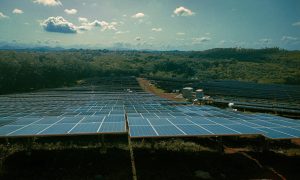3D-Printed Neighborhoods: Affordable or Future Slums?
The use of 3D printing has been gaining traction in various industries, from manufacturing to healthcare. But one area that has received a lot of attention in recent years is the potential for 3D-printed neighborhoods to solve the ongoing issue of affordable housing. On one hand, proponents of this technology tout its cost-effective and customizable nature, making it an ideal solution for providing housing for low-income families. However, there are also concerns about the long-term sustainability of these neighborhoods and whether they could potentially become future slums. In this article, we will explore the pros and cons of 3D-printed neighborhoods and evaluate whether they are truly affordable or if they could turn into slums in the future.
The Promise of 3D-Printed Neighborhoods
The concept of 3D-printed neighborhoods is simple – use 3D printing technology to quickly and cost-effectively produce houses on a large scale. Proponents of this idea believe that it can revolutionize the construction industry by reducing time, labour, and material costs. The ability to print custom designs also allows for a variety of housing options, appealing to different budget and aesthetic preferences.
Affordability for Low-Income Families
One of the main selling points of 3D-printed neighborhoods is that it can provide affordable housing for low-income families. The efficiency of 3D printing significantly reduces construction costs, making it possible to produce homes at a fraction of the price of traditional construction methods. This means that families who otherwise would not be able to afford a home might now have the opportunity to do so.
Furthermore, 3D printing allows for the construction of homes in a shorter amount of time, reducing the costs associated with labour. This can lead to significant savings for developers, which can be passed on to the buyers, making the homes more affordable.
Customization and Flexibility
Another advantage of 3D-printed neighborhoods is the ability to customize homes according to the buyer’s needs and preferences. Not only does this provide a sense of individuality and personalization for homeowners, but it also allows for more efficient use of space. For example, homes can be designed to be energy-efficient, reducing utility costs for residents in the long run.
Moreover, the flexibility of 3D printing technology allows for changes and modifications to be made easily. This means that as the needs of the residents change, their homes can be adapted accordingly, making it a more sustainable option in the long term.
The Potential Drawbacks
While 3D-printed neighborhoods offer promising advantages, there are also potential drawbacks that need to be considered.
Material and Design Limitations
One of the main concerns about 3D-printed neighborhoods is the limited availability of materials and designs. Currently, most 3D homes are built using concrete, which is not the most sustainable material. This could have a negative impact on the environment in the long run. Additionally, the limitations of 3D printing technology may result in monotonous and unappealing designs, affecting the overall value and livability of these homes.
Sustainability and Durability
Given that 3D printing technology is still in its early stages, there are questions about the long-term sustainability and durability of 3D-printed homes. Will these homes be able to withstand natural disasters and extreme weather conditions? What is the life expectancy of these homes? These are important considerations that need to be addressed before we can confidently say that 3D-printed neighborhoods are a sustainable solution for affordable housing.
Conclusion
3D-printed neighborhoods have the potential to provide affordable housing for low-income families and offer customization and flexibility. However, there are concerns about the limitations of the technology and its long-term sustainability. While it is still too early to determine the impact of 3D-printed neighborhoods, it is essential to carefully evaluate and address these concerns to ensure that they do not become future slums. Only then can we truly say if 3D-printed neighborhoods are truly affordable or if there are potential dangers that could turn them into future slums.











